
Gary Cooper was an American actor known for his strong, quiet screen persona and understated acting style. He won the Academy Award for Best Actor twice and had a further three nominations, as well as an Academy Honorary Award in 1961 for his career achievements. He was one of the top-10 film personalities for 23 consecutive years and one of the top money-making stars for 18 years. The American Film Institute (AFI) ranked Cooper at number 11 on its list of the 25 greatest male stars of classic Hollywood cinema.

Charlton Heston was an American actor and political activist. He gained stardom for his leading man roles in numerous Hollywood films including biblical epics, science-fiction films and action films. He won the Academy Award as well as nominations for three Golden Globe Awards, and three Primetime Emmy Awards. He won numerous honorary accolades including the Jean Hersholt Humanitarian Award in 1978, the Golden Globe Cecil B. DeMille Award in 1967, the Screen Actors Guild Life Achievement Award in 1971, the Kennedy Center Honors in 1997, and the Presidential Medal of Freedom in 2003.
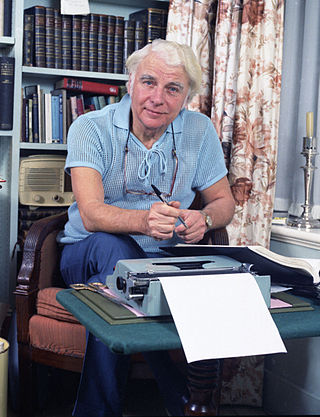
George Emlyn Williams, CBE was a Welsh writer, dramatist and actor.
Ralph Hammond Innes was a British novelist who wrote over 30 novels, as well as works for children and travel books.
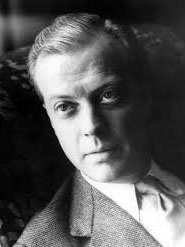
Eric Clifford Ambler OBE was an English author of thrillers, in particular spy novels, who introduced a new realism to the genre. Also working as a screenwriter, Ambler used the pseudonym Eliot Reed for books co-written with Charles Rodda.

Goodwin Sands is a 10-mile-long (16 km) sandbank at the southern end of the North Sea lying 6 miles (10 km) off the Deal coast in Kent, England. The area consists of a layer of approximately 25 m (82 ft) depth of fine sand resting on an Upper Chalk platform belonging to the same geological feature that incorporates the White Cliffs of Dover. The banks lie between 0.5 m above the low water mark to around 3 m (10 ft) below low water, except for one channel that drops to around 20 m (66 ft) below. Tides and currents are constantly shifting the shoals.
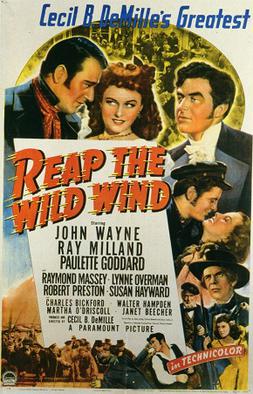
Reap the Wild Wind is a 1942 American adventure film produced and directed by Cecil B. DeMille and starring Ray Milland, John Wayne, and Paulette Goddard, with a supporting cast featuring Raymond Massey, Robert Preston, Lynne Overman, Susan Hayward and Charles Bickford. DeMille's second Technicolor production, the film is based on a serialized story written by Thelma Strabel in 1940 for The Saturday Evening Post. The screenplay was written by Alan Le May, Charles Bennett, Jesse Lasky, Jr. and Jeanie MacPherson.

Ben-Hur is a 1959 American religious epic film directed by William Wyler, produced by Sam Zimbalist, and starring Charlton Heston as the title character. A remake of the 1925 silent film with a similar title, it was adapted from Lew Wallace's 1880 novel Ben-Hur: A Tale of the Christ. The screenplay is credited to Karl Tunberg, but includes contributions from Maxwell Anderson, S. N. Behrman, Gore Vidal, and Christopher Fry. The cast also features Stephen Boyd, Jack Hawkins, Haya Harareet, Hugh Griffith, Martha Scott, Cathy O'Donnell and Sam Jaffe.
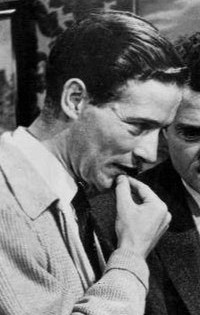
Michael Joseph Anderson was an English film and television director. His career spanned nearly 50 years across three countries, working at various times in the United Kingdom, the United States, and Canada. His most critically and commercially successful works include the World War II film The Dam Busters (1955), the dystopian sci-fi film Logan's Run (1976), and the comedy adventure epic Around the World in 80 Days (1956), which won the 1957 Academy Award for Best Picture.

The following is a partial list of unproduced Alfred Hitchcock projects, in roughly chronological order. During a career that spanned more than half a century, Alfred Hitchcock directed over fifty films, and worked on a number of others which never made it beyond the pre-production stage.

Skyjacked is a 1972 American disaster film starring Charlton Heston and Yvette Mimieux. Directed by John Guillermin, the film is based on the David Harper novel Hijacked. James Brolin lead an ensemble cast primarily playing the roles of passengers and crew aboard an airliner.

Jamaica Inn is a 1939 British adventure thriller film directed by Alfred Hitchcock and adapted from Daphne du Maurier's 1936 novel of the same name. It is the first of three of du Maurier's works that Hitchcock adapted. It stars Charles Laughton and Maureen O'Hara in her first major screen role. It is the last film Hitchcock made in the United Kingdom before he moved to the United States.
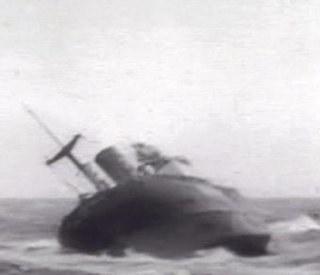
SS Flying Enterprise was a 6,711 ton Type C1-B ship which sank off Cornwall in 1952. She was built in 1944 as SS Cape Kumukaki for the United States Maritime Commission for use in World War II. The ship was sold in 1947 and operated in scheduled service under the name Flying Enterprise. At the end of 1951, on a voyage from Hamburg to the USA with mixed cargo and a few passengers, she was crippled by storm damage and shifting cargo. Passengers and crew were evacuated. Three weeks of effort to save the ship having failed, she sank in January and some of the cargo was later salvaged.

The Minquiers are a group of islands and rocks, about 15 km (9.3 mi) south of Jersey. They form part of the Bailiwick of Jersey. They are administratively part of the Parish of Grouville, and of its Vingtaine La Rocque.

The 31st Academy Awards ceremony was held on April 6, 1959, to honor the best films of 1958. The night was dominated by Gigi, which won nine Oscars, breaking the previous record of eight set by Gone with the Wind and tied by From Here to Eternity and On the Waterfront.
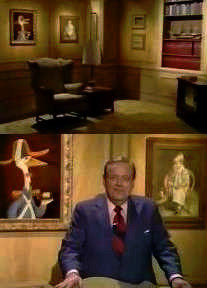
Family Classics is a Chicago television series which began in 1962 when Frazier Thomas was added to another program at WGN-TV. Thomas not only hosted classic films, but also selected the titles and personally edited them to remove those scenes which he thought were not fit for family viewing. After Thomas' death in 1985, Roy Leonard took over the program. The series continued sporadically until its initial cancellation in 2000.

Lawrence Kenneth Pennell was an American television and film actor, often remembered for his role as Dash Riprock in the television series The Beverly Hillbillies. His career spanned half a century, including starring in the first-run syndicated adventure series Ripcord in the leading role of skydiver Theodore "Ted" McKeever, and as Keith Holden in Lassie. He was also a baseball player, playing on scholarship for the University of Southern California (USC) and later professionally for the Boston Braves organization.
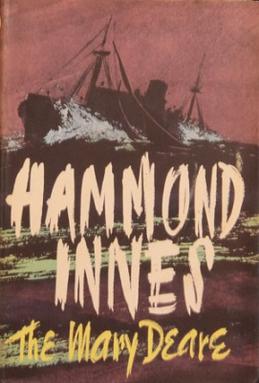
The Wreck of the Mary Deare is a 1956 novel written by British author Hammond Innes, which was later adapted as a film starring Gary Cooper released in 1959 by MGM. According to Jack Adrian, the book "at a stroke launched him into that rarefied empyrean most writers yearn for though few attain, supersellerdom."

The Bramble Bush is a 1960 American drama film, based on the controversial novel of the same name, directed by Daniel Petrie and starring Richard Burton, Angie Dickinson, Barbara Rush, Jack Carson and James Dunn. It was released by Warner Bros.

The RMS Mülheim was a German cargo ship that was built in Romania and launched in May 1999. It was wrecked on 22 March 2003 at Land's End, United Kingdom.


















